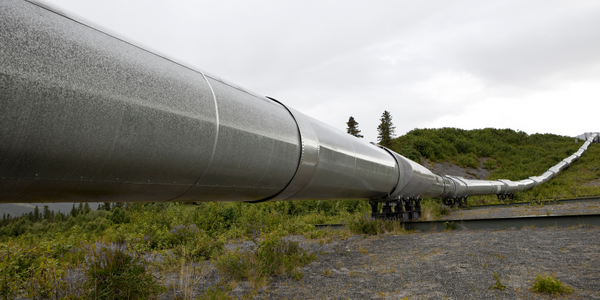Francis Drilling Fluids, Ltd. Deploys SimpliVity’s OmniStack™ Hyperconverged Infrastructure Platform
---nyse--hpe_1.jpg)
Customer Company Size
Large Corporate
Region
- America
Country
- United States
Product
- SimpliVity’s OmniStack™
- Cisco UCS C240 C-Series systems
Tech Stack
- Microsoft Dynamics NAV
- Microsoft Exchange
- Microsoft SQL Server
- Microsoft SharePoint
- Cisco Unified Communications Manager
Implementation Scale
- Enterprise-wide Deployment
Impact Metrics
- Cost Savings
- Productivity Improvements
Technology Category
- Infrastructure as a Service (IaaS) - Cloud Computing
- Infrastructure as a Service (IaaS) - Cloud Storage Services
Applicable Industries
- Oil & Gas
Applicable Functions
- Discrete Manufacturing
- Logistics & Transportation
Use Cases
- Predictive Maintenance
- Fleet Management
Services
- Cloud Planning, Design & Implementation Services
- System Integration
About The Customer
Francis Drilling Fluids, Ltd. (FDF) is one of the oldest drilling fluids companies on the Gulf Coast and is a true American success story. The company started with one truck in 1977 and has grown into the largest drilling fluids supplier on the Gulf Coast and a leader in logistics operations for the fracking industry. Now 23 plants strong, FDF offers a full range of high quality fluid products and services, including liquid mud storage, specialized mixing, water-based chemicals, completion fluids, completion fluids chemicals, casing scrubs, and corrosion inhibitors. The company is based in Lafayette, Louisiana. FDF also runs a variety of different mission critical applications including Microsoft Exchange, Kronos time and attendance, Kofax/Axacore for document imaging, and NetTraQ for GPS fleet tracking, along with custom inventory tracking and logistics software.
The Challenge
Francis Drilling Fluids, Ltd. (FDF) had been using an IBM BladeCenter infrastructure, IBM SAN storage, DLT tape solutions, and Veeam for VM backup protection. Over time, the company saw more demand for new applications and experienced significant growth in VM servers, which put significant strain on the existing legacy infrastructure and the small IT team. The added complexity from the VM server 'sprawl' coupled with initiatives to improve data protection, DR, and co-location hosting, the company's IT department decided to take a closer look at converged infrastructure. The company works hard to ensure alignment between business strategy and IT strategy, according to Steve Schaaf, Chief Information Officer for FDF. However, with a small IT shop, executing on that vision can be challenging.
The Solution
FDF decided to deploy two Cisco C240 M3 systems in its Lafayette, Louisiana data center and another pair of Cisco C240 M3 systems, consisting of a space efficient, 2U x86 platform, in a co-location facility in Dallas for disaster recovery. FDF required a full set of functionality, including flexible Cisco UCS C-series 2U x86 platforms with pooling and sharing of all resources, simple, cost-effective, incremental scale-out in the future, ease of use and unified global management from one interface with a VM/application-centric approach, fully-integrated data efficiency with inline deduplication and policy-based data protection for improved business continuity, management and visibility that is VM-application-centric Support quick and simple deployment. Since installing SimpliVity, FDF has been able to reduce its data center footprint from 200 to 4U by eliminating its BladeCenter unit, tape backup solution, SAN and expansion cabinets.
Operational Impact
Quantitative Benefit

Case Study missing?
Start adding your own!
Register with your work email and create a new case study profile for your business.
Related Case Studies.

Case Study
Taking Oil and Gas Exploration to the Next Level
DownUnder GeoSolutions (DUG) wanted to increase computing performance by 5 to 10 times to improve seismic processing. The solution must build on current architecture software investments without sacrificing existing software and scale computing without scaling IT infrastructure costs.

Case Study
Remote Wellhead Monitoring
Each wellhead was equipped with various sensors and meters that needed to be monitored and controlled from a central HMI, often miles away from the assets in the field. Redundant solar and wind generators were installed at each wellhead to support the electrical needs of the pumpstations, temperature meters, cameras, and cellular modules. In addition to asset management and remote control capabilities, data logging for remote surveillance and alarm notifications was a key demand from the customer. Terra Ferma’s solution needed to be power efficient, reliable, and capable of supporting high-bandwidth data-feeds. They needed a multi-link cellular connection to a central server that sustained reliable and redundant monitoring and control of flow meters, temperature sensors, power supply, and event-logging; including video and image files. This open-standard network needed to interface with the existing SCADA and proprietary network management software.

Case Study
Refinery Saves Over $700,000 with Smart Wireless
One of the largest petroleum refineries in the world is equipped to refine various types of crude oil and manufacture various grades of fuel from motor gasoline to Aviation Turbine Fuel. Due to wear and tear, eight hydrogen valves in each refinery were leaking, and each cost $1800 per ton of hydrogen vented. The plant also had leakage on nearly 30 flare control hydrocarbon valves. The refinery wanted a continuous, online monitoring system that could catch leaks early, minimize hydrogen and hydrocarbon production losses, and improve safety for maintenance.









